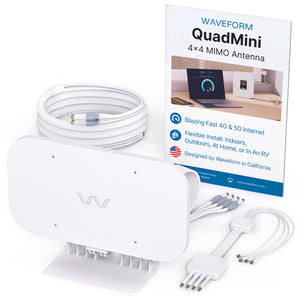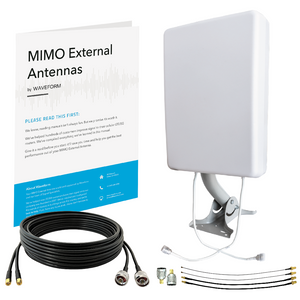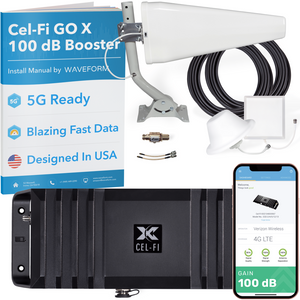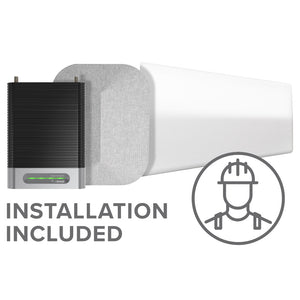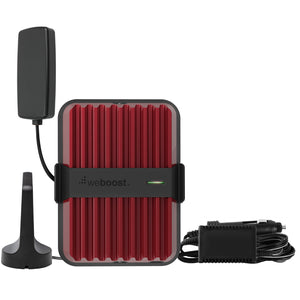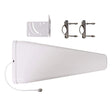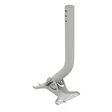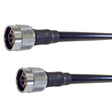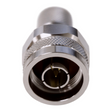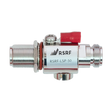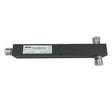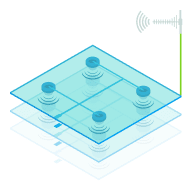A Distributed Antenna System, or DAS, is a clustered installation of antennas to boost cellular network coverage in areas with weak signal. DAS systems are typically used for two main applications: providing coverage and adding capacity. In situations where buildings have limited access to existing cell tower coverage (for example, underground subway stations), DAS systems help add coverage. In situations where high demand from users might exceed existing coverage (like a football stadium), they help increase capacity and reduce load from the macro network.
Active DAS
When additional capacity is needed, like in a football stadium or airport, an active DAS system is typically used. A state of the art active system can cover virtually any size of building and up to any capacity. Some of the most ambitious active DAS systems have been designed to cope with the load of over 70,000 Superbowl attendees, or the 2.47 million sq ft of coverage for 170,000 CES 2016 attendees.
Active DAS systems often use fiber optic cable to distribute signal between a centralized signal source and “remote nodes” placed around a building. The signal source is typically a “head-end” that combines signals from multiple carriers, which each need to provide their own signal source to the system, typically via their own fiber backhaul.
The equipment used in an active DAS isn’t cheap. This is one of the main drawbacks to an active DAS system - they are extremely expensive. If your building doesn’t have a Superbowl-sized budget, you may be out of luck.
The other big inconvenience of active DAS is that every installation must be approved by the cell phone carriers affected. This is an FCC regulation, because the carriers own the cellular frequencies. In practice carrier approval is usually granted, but the bureaucracy involved is complicated, and the whole project can cost millions of dollars and take years to get up and running. Once approval is granted, carriers then need to provide a signal source for the DAS.
Hybrid DAS
“Hybrid” DAS is another option. A hybrid system works a lot like an active system. Hybrid DAS uses some fiber for distribution of signal, but relies on passive coaxial cable for much of the signal distribution. Hybrid systems can be a good solution for medium-sized spaces, or unusual signal problems. Multiple passive systems can be linked by fiber cable to a remote amplifier unit.
A hybrid system still has many of the same drawbacks as active DAS, however. It is still very expensive and, because it because it involves using signal provided by the carriers themselves, it still needs carrier approval and involvement.
Passive DAS
Passive DAS systems typically use passive components like coaxial cable, splitters, and diplexers to distribute signal, and Unlike active DAS, they use bi-directional amplifiers to rebroadcast signal from the macro cellular network using a donor signal on the roof.
There are limitations to the reach of passive DAS solutions. Because they use coax cable to distribute signal, signal loss is higher than with active DAS. The further away the antennas are from the amplifier, the higher the signal loss. The signal loss results in lower downlink output power. These restrictions mean that the maximum coverage area for a passive DAS system is typically around 500,000 sq ft.
But the advantages of passive DAS solutions are considerable. In particular, they are considerably cheaper than active DAS. Because they typically rebroadcast the macro network’s signal, there is less need for carrier approval and coordination. In fact, if the amplifier systems are classified as “consumer” boosters by the FCC (our most popular passive DAS amplifiers, like the Wilson Pro series and the SureCall Force5, are both approved by the FCC), they can be installed without any pre-approval or coordination with carriers. This means that there is no need for lengthy extra bureaucracy, and deployment times can be as quick as a few weeks.
Whether active, hybrid, or passive DAS is the right choice for your building depends entirely on your circumstances. The coverage area required, the design of the building, and the budget and timescale for the project, all affect which option will be right for you. If you have a smaller building (under 500,000 sq ft), a passive solution might be the best option for your budget.
Get in touch with our signal specialists to find out exactly which solution is best for your application.
























